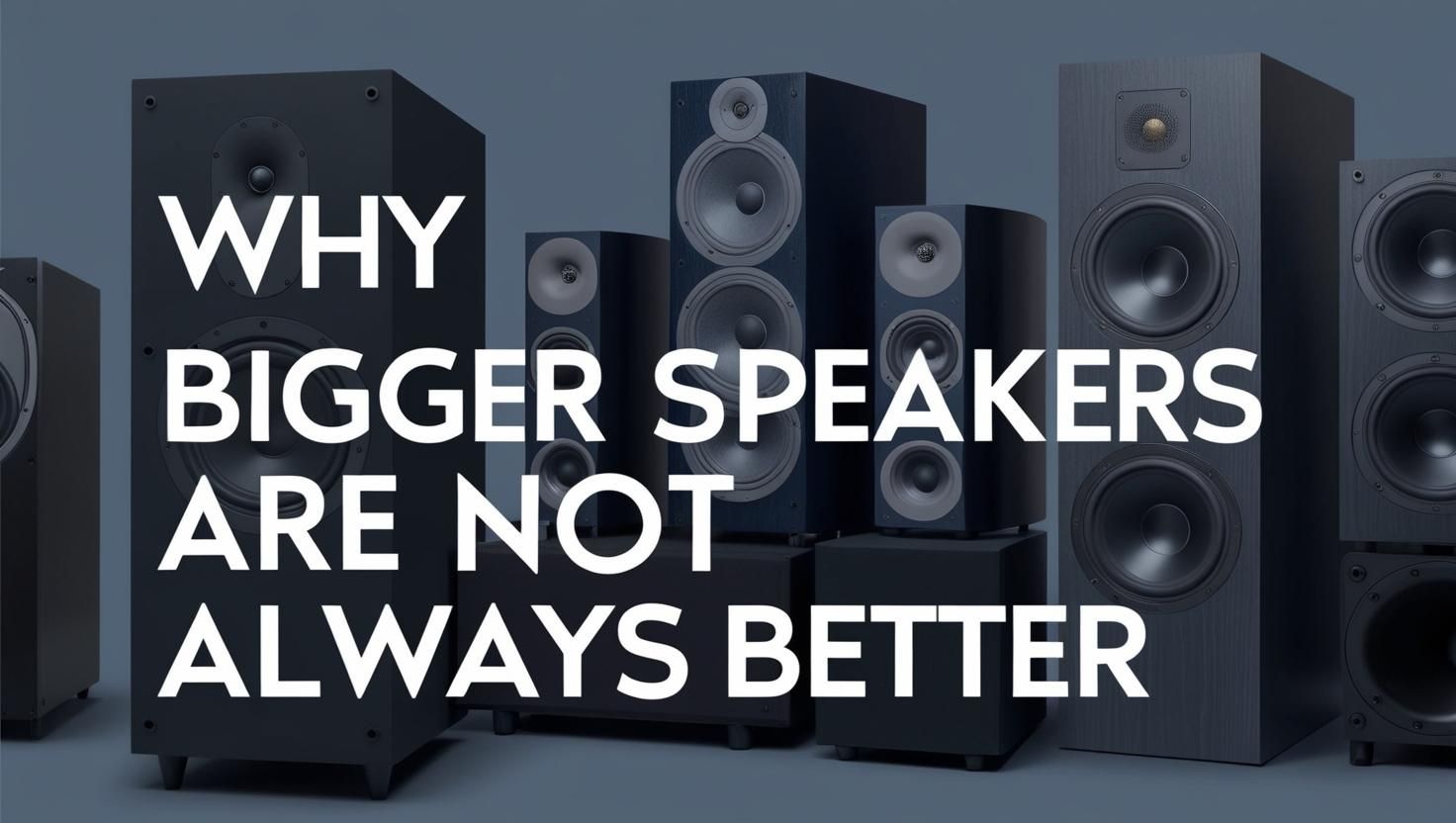Why Bigger Speakers Are Not Always Better for Small Rooms
When setting up a home audio system, many assume that bigger, more powerful speakers automatically translate to better sound. While larger speakers do have advantages in terms of output and bass response, they are not always the ideal choice, especially for small rooms. Oversized speakers can often cause more harm than good in compact spaces. Let’s explore why bigger isn’t always better when it comes to speaker selection for small rooms.
1. Acoustic Overload and Room Size Mismatch
Larger speakers are designed to produce high output, filling large spaces with deep, resonant sound. However, in a small room, this extra power can overwhelm the acoustics, creating excessive reflections and reverberations that muddy the sound rather than enhancing it. The lack of space prevents the sound waves from fully developing, leading to an imbalanced and often unpleasant listening experience.
2. Bass Boom and Standing Waves
Bigger speakers, especially floor-standing models, tend to produce more bass due to their larger drivers and enclosures. While deep bass is desirable in some settings, a small room can amplify low frequencies excessively, creating unwanted bass boom. This occurs due to standing waves—when certain frequencies resonate too strongly within the confined space, leading to a boomy, one-note bass response instead of a well-defined and tight low end.
3. Limited Speaker Placement Options
A small room restricts the number of viable positions for speaker placement. Large speakers require adequate space to breathe and be positioned properly to optimize sound dispersion. If crammed into tight corners or too close to walls, large speakers can produce distorted or unbalanced audio, defeating the purpose of investing in high-quality equipment.
4. Reduced Listening Distance
Large speakers are designed to be heard from a distance, allowing sound waves to blend and create an immersive experience. In a small room, the listening distance is often too short for this blending to occur naturally, resulting in an uneven soundstage. Smaller bookshelf speakers, on the other hand, are designed for near-field listening and can deliver more precise audio clarity in such environments.
5. Overpowering Sound at Low Volumes
Large speakers require more power to perform optimally and are built for higher volume levels. Large speakers may struggle to sound their best at reduced power levels in a small room, where lower volume listening is more practical. This can lead to a lack of detail in low-volume playback, making smaller speakers a better fit for those who don’t want to disturb others while still enjoying a balanced sound.
6. Amplifier Power Requirements
Bigger speakers require a more powerful and high-quality amplifier to drive them effectively. Using a low-powered or entry-level amplifier with large speakers can result in inferior sound quality, as the amplifier may struggle to deliver sufficient power. This can lead to distortion, poor dynamics, and an overall lackluster listening experience. Smaller speakers, on the other hand, are easier to drive and can achieve great sound even with modest amplification.
7. Bookshelf Speaker Driver Size Considerations
For small rooms, bookshelf speakers with 4-inch or 5-inch drivers tend to provide a more balanced sound compared to models with 6-inch or larger drivers. Smaller drivers are better suited for compact spaces, as they deliver controlled bass and clear mids without overpowering the room. Larger bookshelf speakers can still create bass boom issues similar to floor-standing speakers, making them less ideal for tight spaces.
8. Impact of Reflective Surfaces in Indian Homes
Most Indian homes have highly reflective surfaces such as vitrified tile, marble, or granite flooring, along with hard ceilings and walls. These surfaces contribute to excessive sound reflections, reverberation, and echo, which degrade the overall listening experience. Using large-driver speakers in such environments can result in an overly bright or boomy sound, making it difficult to achieve clarity and balance. Smaller speakers, paired with proper acoustic treatment like rugs, curtains, or wall panels, can help minimize these issues and create a more enjoyable sound profile.
9. Cost and Efficiency Considerations
Bigger speakers are generally more expensive, not just in initial cost but also in the associated requirements for amplifiers, stands, and possibly acoustic treatment to manage excessive reflections and bass issues. In contrast, smaller speakers can provide excellent sound quality in small rooms at a more budget-friendly price while also being easier to drive with standard amplifiers.
Conclusion: Choosing the Right Speakers for Your Space
The key to a great audio experience is not the size of the speaker but how well it matches the room’s acoustics. For small rooms, bookshelf or compact speakers—especially those with 4-inch or 5-inch drivers—are often the best choice, offering a more balanced and clear sound without overwhelming the space. Instead of focusing on size alone, consider factors like speaker placement, room treatment, and listening distance to create an immersive and enjoyable listening environment. Bigger speakers may work wonderfully in large living rooms or dedicated home theaters, but for a small space, the right-sized speakers will always provide the best results.













